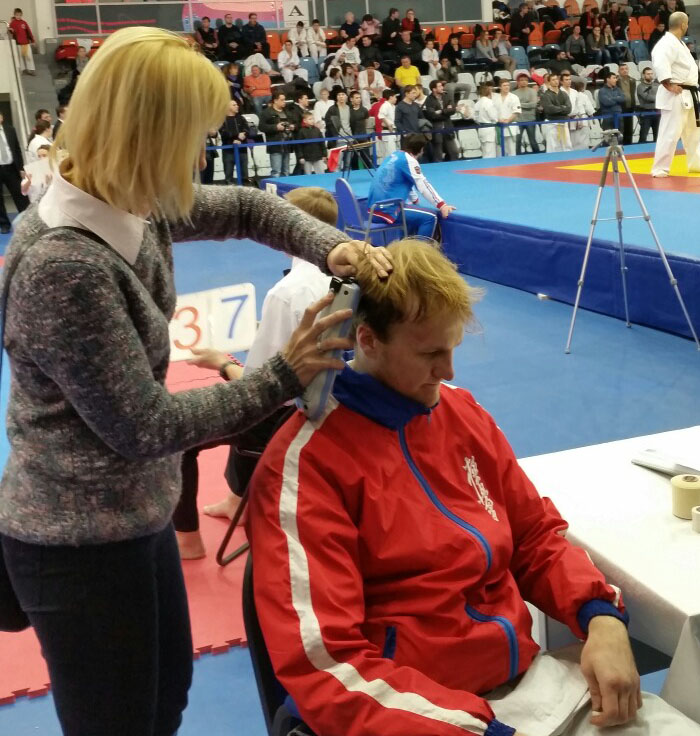
An Infrascanner is used at a karate competition in Russia.
©Sinto Group. All Rights Reserved.
March 14, 2017
By JOSHUA BROCKMAN
My first encounter with a serious head injury was during a whitewater paddling course. A few people untied a canoe from the top rung of a canoe trailer without adequate spotting; it slipped off too quickly and fell on a teenager’s head. She had to be rushed to the hospital.
In high school, during a soccer match, our team’s goalie was knocked out in an intense moment in a hard-fought game. Fortunately, a neurosurgeon happened to be on the sidelines. He underwent surgery for a subdural hematoma.
These memories flashed through my mind as I listened to Baruch Ben Dor discuss the Infrascanner’s capabilities and its use by the Marines during a presentation in Philadelphia last spring. Undark gave me the green light to embark on a reporting journey to investigate the promise and challenges of using this and other portable technologies to treat traumatic brain injury on the sports field, battlefield, in ambulances and operating rooms, as well as in remote locations.
Accidents happen. And the risk of head injury isn’t going to disappear. But technology is changing how fast help can arrive.
Read my story: For Brain Trauma, an Emerging Suite of Diagnostic Gadgets.
